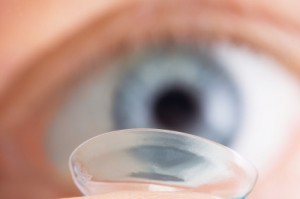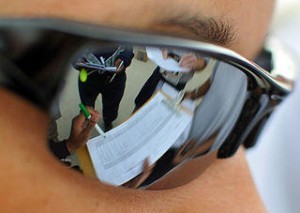How to Prevent Pinkeye (Conjunctivitis) in Adults and Children
Conjunctivitis, or pinkeye as it is commonly known, is a condition of the outer part of the eye that causes pronounced redness, itching and tearing. Although pinkeye looks very serious and somewhat scary, it is actually a mild condition that rarely leads to any complications. Pinkeye can affect both adults and children but most of know about the outbreaks of pinkeye in schools. Therefore it is often thought of more as a condition among children. Indeed children are more prone to outbreaks, and for good reason – they do not practice the same preventative measures that adults would when pinkeye is doing its rounds.
Firstly it is important to understand that not all types of pinkeye are the same. Pinkeye (conjunctivitis) is mainly infectious or allergic in nature. Infectious conjunctivitis is when the condition is caused by microbes like bacteria and viruses. It is very contagious and easily spread from one person to another. The other major type of pinkeye is allergic conjunctivitis. This type occurs in some people and not others depending on the allergic disposition of the individual. It is not contagious. Lastly there is reactive or irritant conjunctivitis which is caused by exposure to certain chemicals, gases or fine particles in the air. It is not contagious but will affect most people who are exposed to the same irritant.
Wash Your Hands Regularly
The microbes that cause infectious conjunctivitis are easily spread from one person to another through the hands. Secretions from the eyes may adhere to the hands and then be transmitted to another person’s hands through direct contact. Or it can be passed along indirectly through inanimate objects (fomites) that are touched by different people. For this reason washing your hands regularly is one of the most effective ways of preventing conjunctivitis. Wash your hands thoroughly with water, before lathering up with an antibacterial soap and rinsing. Always dry your hands with a clean towel. Practicing regular hand hygiene in this way can also help prevent other common infections.
Do Not Touch Your Eyes
Apart from washing your face and putting on contact lenses, there is almost never any other reason to touch your eyes. You can never be sure what microbes are lurking on your hands and you could be depositing it on your eyes when you touch them. Try to be conscious of any habits that you have where you touch your eyes repeatedly. Even rubbing your eyes can be a problem. You need to be particularly careful if you are in close contact with somebody who has conjunctivitis, even if it is not direct contact. While washing your hands regularly with antibacterial soap or disinfecting with a hand wash reduces the risk, it is best to avoid making contact with your eyes unless necessary.
Never Share Eye Cosmetics
Be it eye shadow, mascara or eyeliner it is never a good idea to share these eye cosmetics. Microbes from one person can adhere to the applicator and be easily transmitted to another person. It may seem rude to refuse a friend or loved one access to your eye makeup but it can make all the difference in preventing an infection. If you do have infectious conjunctivitis while using these eye cosmetics then it is also advisable to get rid of the makeup as soon as possible. Microbes can adhere to the applicator or makeup itself and cause recurrent of infections even if you do not share your eye cosmetics with another person.
Properly Clean Or Discard Contacts
Contact lens wearers have to be particularly careful. The lenses make direct contact with the conjunctiva and can easily introduce the microbes to the eye. It may come from your hands itself when you are touching the contacts, from the air or even from your contact lens protective case. If you are using permanent contact lenses then you need to properly clean it as instructed and on a regular basis. Ensure that it is stored in the correct type of solution between wearing. Also wash you hands thoroughly before inserting or removing your contact lenses. Disposable contact lenses are often the better choice as it can discarded when necessary. This can help prevent a recurrence of the eye infection.
Avoid The Allergens
If you suffer with allergic conjunctivitis then it is important to identify the possible allergens that trigger your condition. Often people with allergic conjunctivitis have other allergic conditions like hay fever. Take note of what triggers your eye and nose especially since these two parts lie so close to each other. It may be helpful to keep a diary and record what you may have been exposed to during the course of the day. The allergen is primarily airborne and some of the more common ones are animal hair, house dust mite, pollen and cockroaches. One you spot the triggers, try your best to stay away from it.
Use Protective Eyewear
Irritants are substances that can cause inflammation in any person’s eye. It is not specific to some people only like in an allergy. However, some people may be able to withstand exposure to these irritants for longer than others without any symptoms manifesting. Chlorinated water in swimming pools is one of the common irritants that many people react to. Smoke, dust and sand particles are other common irritants. Try to wear protective eyewear like watertight swimming goggles in the pool and safety goggles if you work in an environment with dust and smoke. Always consult with an eye professional before you purchase this eyewear as some are more effective than others.
Clean Bed Linen And Towels
Your bed linen and towels should be washed frequently, more so if you just suffered with conjunctivitis recently or still have it. Secretions from your eyes may be laden with the microbes that caused the infections. It can easily reinfect your eyes when you wipe your face with a towel or sleep on a pillow case that has not been washed. Cleaning bed linen and towels is even more important if you are living in a house with a person who has or had conjunctivitis. You can still get the infection through personal items even days or weeks after the pinkeye clears in the infected person. Wash with hot water and try to dry the item outdoors where there is strong sunlight.



